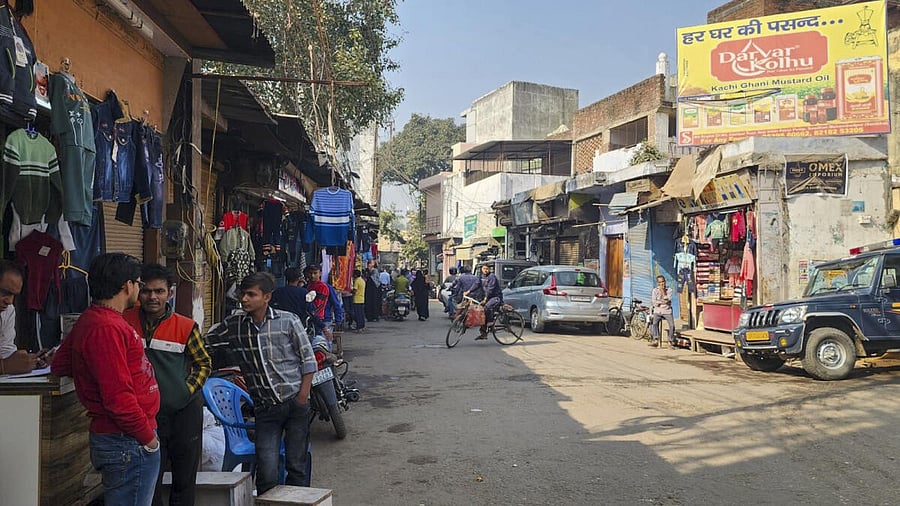
A market opens in violence-hit Sambhal district of Uttar Pradesh
Credit: PTI Photo
The temple-masjid issue which led to communal polarisation in the country for decades has again exploded in UP, causing the death of four persons and injuries to many. The deaths occurred in police firing on Sunday in Sambhal, a town near Meerut in western UP, during the survey of a mosque believed to have been constructed in the 16th century. It is a protected monument under the Ancient Monuments Preservation Act, 1904. A local civil court ordered a survey of the mosque after some Hindu petitioners staked claim to it, alleging that it was constructed by Babar after demolishing a temple. There are different versions about how the situation developed. The police and the Hindu side claim that Muslims who gathered there pelted the police with stones and obstructed the survey. The Muslims have said that the survey was done wrongly and the police provoked the crowd. It is alleged that some activists had also raised provocative slogans.
The court ordered the survey when the Places of Worship (Special Provisions) Act, 1991, mandated that the religious status of any place of worship should be maintained as it existed on August 15, 1947. The only exception was the Babri Masjid whose status was under legal challenge. The Supreme Court endorsed the law in its Babri Masjid judgement. But disputes have continued and lower courts and the Allahabad High Court have entertained petitions questioning the status and ownership of mosques and pleading for surveys. The Gyanvapi mosque in Varanasi and the Krishna Janmabhoomi site in Mathura have received special attention. The Supreme Court has not intervened effectively to stop the surveys. The court’s observation that the Act did not bar a survey to find out the nature of a religious place actually encouraged activists and petitioners to intensify their campaign. Finding the nature of a religious place, especially a disputed one, is not an academic, archaeological or historical issue. It is a communal and political issue intended to divide the people. That is what happened in Varanasi and Mathura and is sought to be done in Sambhal. It has repercussions that go beyond these places.
The 1991 law was intended to ensure that religious places do not become centres of communal politics and polarisation. Its spirit is being questioned and its letter is sought to be violated. But it is, still, the law of the land, and it is the government’s responsibility to defend it. RSS chief Mohan Bhagwat has said the organisation would not “look for a Shivling in every mosque and was not in favour of launching any movement on such issues”. But communal and divisive politics is aggressively at work with encouragement and involvement from the powers that be.
